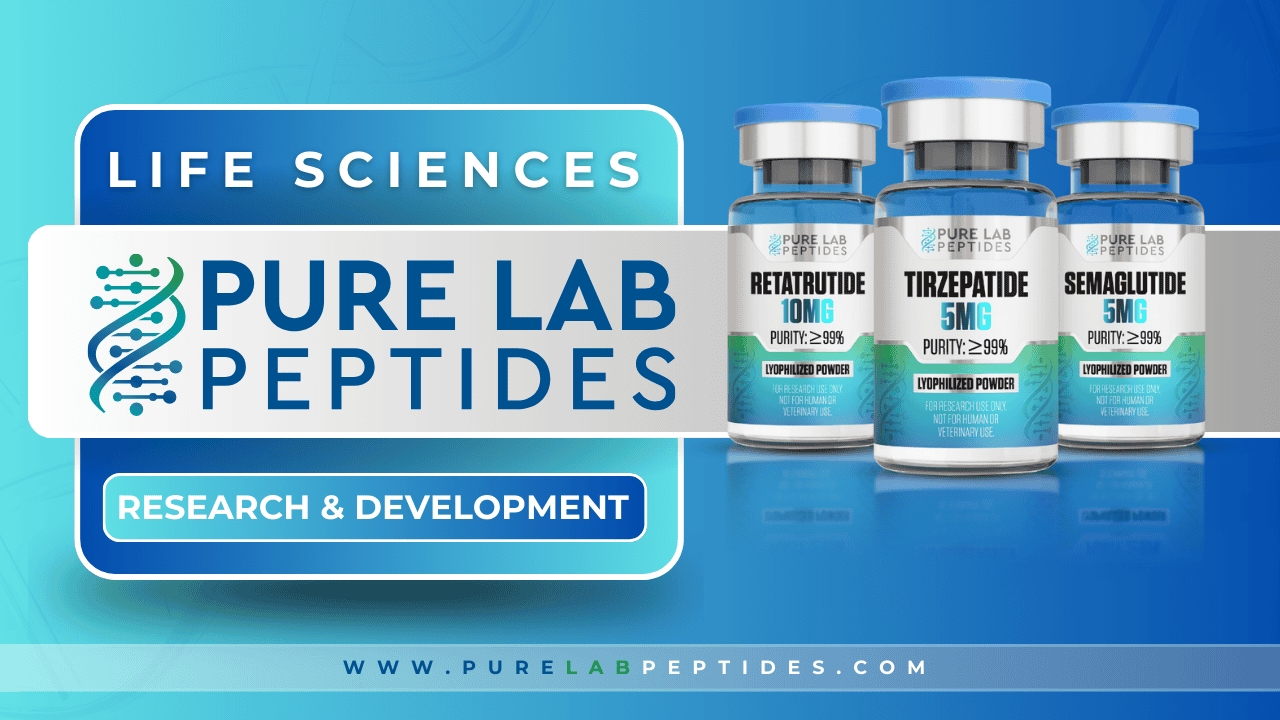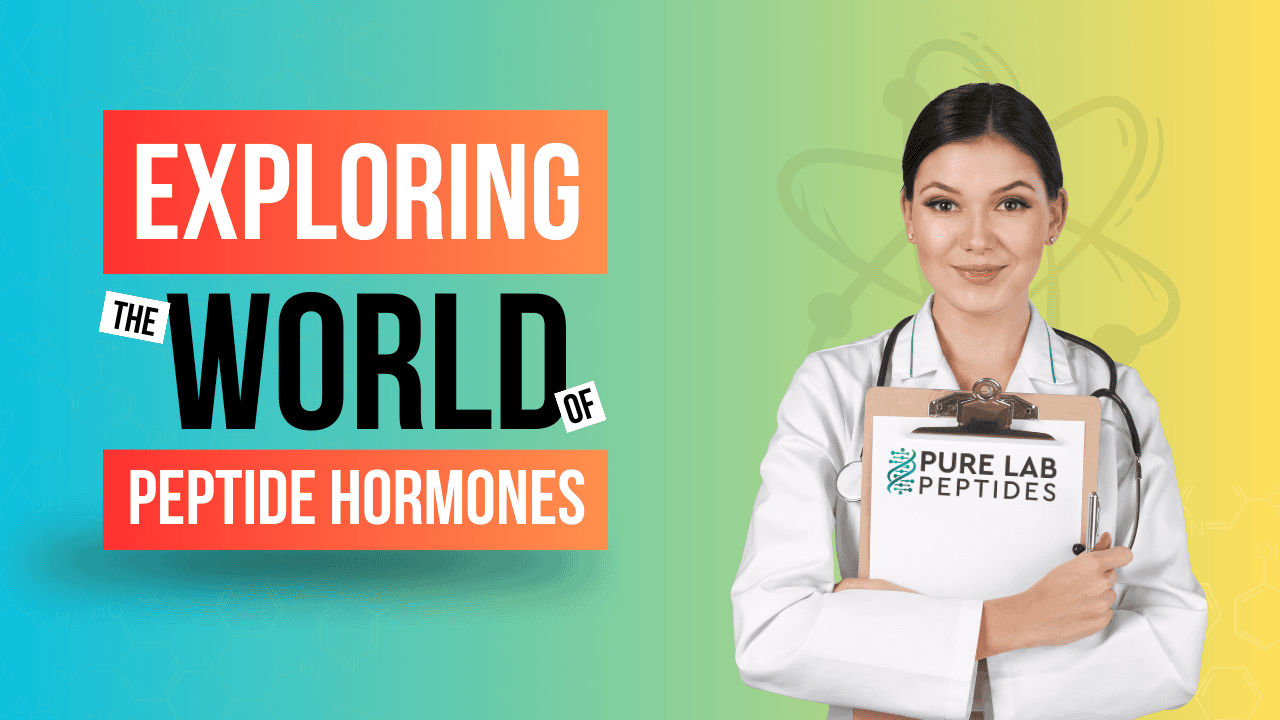

Exploring peptide ligand-receptor interactions in G protein-coupled receptors (GPCRs) is like diving into an ocean of biochemical intrigue.
This topic is crucial for anyone keen on understanding how these interactions govern numerous physiological processes.
Why should you read this article? Because it could unlock knowledge beneficial for fields ranging from drug discovery to molecular biology!
So, what exactly are peptide ligands? Think of them as molecular messengers. These peptides are sequences of amino acids that bind to receptors, like keys fitting into specific locks, to activate certain cellular functions.
The chemistry behind peptides involves solid-phase peptide synthesis. It’s like cooking up a formula in a lab—step-by-step and precise. Synthetic peptides can be tailored for various research and therapeutic applications.
Ever played telephone as a kid? Peptide ligands are like those whispered messages, except they signal cellular actions by binding to receptors. A whisper here, a reaction there—it’s a cellular symphony.
GPCRs are like the Swiss Army knives of cell membranes. These membrane proteins switch on various signaling pathways. Upon ligand binding, they initiate intracellular signals that regulate countless physiological processes.
Imagine GPCRs as doormen. They recognize peptide ligands at the cell surface and relay signals inside the cell via heterotrimeric G proteins. It’s a relay race where the baton is the cellular signal.
GPCRs come in many flavors—each fine-tuned to different signals. Think chemokine receptors for immune signaling or opioid receptors for pain relief. The diversity in GPCRs allows them to handle a variety of physiological roles.
Ligand binding is where the magic happens. It’s the process where a peptide attaches to a receptor—a fundamental interaction that triggers downstream signals.
Peptides bind to GPCRs at specific binding sites, akin to docking a spaceship. These interactions depend on the peptide sequence and the receptor’s structure.
Binding affinity is like the strength of a handshake—it determines how strongly a peptide ligand attaches to its receptor. Higher affinities usually result in more potent signals.
Peptide structure is not just about looks—it’s about function. The conformation of a peptide determines how well it can fit into a receptor’s binding site, impacting receptor activation.
Amino acid sequences in peptides act like zip codes, directing them to specific receptors. This sequence specificity ensures accurate receptor-ligand binding.
The cellular environment—pH, temperature, and ionic strength—plays a crucial role. These factors can tweak the binding mode and receptor-ligand interaction dynamics.
Binding modes are like different dance steps—each mode represents a unique way a peptide interacts with a receptor. Understanding these modes helps in drug discovery.
In GPCRs, binding modes can be as varied as salsa, tango, or waltz. From orthosteric to allosteric sites, each mode triggers specific cellular responses.
Tools like X-ray crystallography and NMR spectroscopy offer a peek into binding modes. These techniques map out the receptor’s structure and pinpoint peptide interactions.
Peptides achieve specificity through the unique “shape” of their amino acid sequences. Ligand recognition ensures each peptide only binds to its designated receptor.
Receptor selectivity is achieved through the precise fitting of peptides at receptor sites. It’s like carving out a sculpture—each detail matters.
Molecular recognition involves intricate interactions at atomic levels. This ensures that the right peptide lands on the correct receptor, triggering specific signals.
Signal transduction is like a game of dominoes. Once a peptide binds to a receptor, it sets off a chain reaction of intracellular events leading to a physiological response.
When peptides bind GPCRs, they activate G proteins. This initiation sets off multiple signal amplification pathways, often involving secondary messengers.
Secondary messengers—cAMP, calcium ions—act like couriers, carrying signals within the cell. They amplify the receptor’s message, ensuring the signal isn’t lost in translation.
Chemokine receptors are a subtype of GPCRs, pivotal in immune responses. They guide the movement of immune cells to sites of infection or injury.
These receptors orchestrate immune cell dance routines, ensuring they reach their destination to fight off invaders or initiate healing.
Peptides, including chemokines, bind chemokine receptors by recognizing specific amino acid residues, ensuring precise immune cell targeting.
Opioid receptors are another class of GPCRs, primarily involved in pain modulation and reward pathways. They’re the body’s natural painkillers.
Pain relief from opioid receptors is like having a built-in pharmacy. Peptides like endorphins bind here to reduce pain signals and induce euphoria.
Opioid peptides bind to these receptors through specific, often well-conserved, binding sites. The interaction usually involves a balance of hydrophobic and polar interactions.
Peptide therapeutics are medical treatments using peptides. They have the precision of a surgeon’s scalpel, targeting specific receptors to treat various conditions.
Recent years have seen a boom in peptide drug discovery—synthetic peptides, bifunctional peptides—tailored for better efficacy and specificity.
Peptide drugs target GPCRs with high specificity, reducing off-target effects. They bind to the receptors, mimicking or blocking natural peptides to modulate physiological responses.
Designing peptide drugs is like solving a complex puzzle. Stability, delivery, and receptor specificity are key challenges to overcome.
Peptides can be like fragile glass—easily broken down. Stabilizing them with modifications like cyclic peptides improves their resilience.
Improving bioavailability is crucial. Techniques like encapsulation or modifying peptide sequences help ensure they reach their target without degradation.
Studying these complex interactions often employs advanced techniques like X-ray crystallography, NMR spectroscopy, and computational modeling.
X-ray crystallography provides a high-resolution view of peptide-receptor complexes, revealing the structural basis of ligand binding.
NMR spectroscopy helps decipher the dynamics of peptide-receptor binding. It’s like reading a molecular diary, offering insights into how peptides interact with receptors over time.
Enhancing peptide therapeutics involves optimizing their binding affinity and specificity through rational design and screening.
Computational modeling predicts how peptides interact with receptors. It’s like having a virtual laboratory, accelerating the drug design process.
Increasing receptor binding involves altering peptides to fit more snugly into receptor sites. Techniques include peptide analogues and cyclic peptide design to ensure a more effective interaction.
Several peptide drugs like Glucagon-like Peptide 1 (GLP-1) analogues have made significant impacts, particularly in managing diabetes.
GLP-1 receptor agonists have revolutionized diabetes care. These peptides improve insulin secretion and glycemic control, providing an effective treatment option.
Peptide ligands targeting receptors involved in cancer progression offer promising therapeutic avenues. They can hone in on cancer cells, reducing collateral damage to healthy tissues.
The future of peptide-receptor research looks bright, with advancements in synthetic biology and high-throughput screening paving the way for innovative therapeutics.
Trends like personalized medicine and peptide vaccines are on the rise. These approaches promise targeted treatments with improved efficacy and reduced side effects.
AI and machine learning offer new horizons in peptide drug discovery, speeding up the identification of promising peptide ligands and optimizing their design.
Peptide binding to chemokine receptors involves recognizing specific binding sites, determined by the receptor’s structure and functional groups.
These interactions often involve complex molecular dynamics, including ionic interactions and hydrophobic forces that stabilize the receptor-ligand complex.
Structural biology tools provide a detailed view of chemokine receptor binding, aiding in the design of targeted therapeutics for immune modulation.
Peptides trigger GPCR signaling by binding to the extracellular domain. This interaction causes a conformational change, activating intracellular G proteins.
Once a peptide binds to a GPCR, it initiates a cascade of intracellular events, including the activation of secondary messengers and downstream effectors.
Techniques like fluorescence resonance energy transfer (FRET) and bioluminescence resonance energy transfer (BRET) help visualize peptide-induced signaling pathways in real-time.
Binding modes in opioid receptors are influenced by the peptide’s structure and the receptor’s binding pocket. These interactions determine the downstream physiological effects.
Comparing various opioid ligands helps understand differences in efficacy and side effects. Each ligand’s binding mode offers clues to its therapeutic potential.
Understanding opioid binding modes can lead to the design of better pain relievers with fewer side effects. It offers a path to safer, more effective opioid drugs.
These interactions involve a ballet of molecular forces, from hydrogen bonds to van der Waals interactions. Each contributes to the stability and specificity of the peptide-GPCR complex.
Hydrophobic interactions help stabilize peptide-GPCR complexes, while hydrophilic interactions enhance specificity and receptor-ligand binding affinity.
Techniques like cryo-electron microscopy (cryo-EM) and molecular dynamics simulations offer a window into these complex peptide-GPCR interactions, providing detailed structural insights.
Designing peptides involves tweaking amino acid sequences to improve fit and function. Computational tools can predict the best peptide-receptor interactions.
Peptide engineering can improve binding affinity and specificity, creating tailored peptides that act as precise therapeutic tools.
Optimization strategies include cyclic peptide design and incorporating unnatural amino acids to enhance peptide stability and receptor specificity.
Understanding binding modes relies on structural biology techniques, which map out how peptides interact with their receptors at atomic resolutions.
Key determinants include the peptide’s conformation and the receptor’s binding site architecture. These factors dictate how effectively a peptide will bind and activate the receptor.
Computer simulations can predict binding modes by modeling the dynamic interactions between peptides and receptors, offering valuable insights for drug design.
The chemistry of peptide ligands involves the nature of their amino acid residues and the resulting three-dimensional structure, which dictates their binding properties and function.
Chemical modifications can enhance or inhibit binding. For example, adding hydrophobic groups may increase stability, while polar groups can improve specificity.
Side chains play a crucial role in determining a peptide’s binding affinity and specificity. They interact with receptor binding sites, influencing the overall ligand binding mode.
Peptides can enhance receptor activity by stabilizing active conformations or preventing degradation. This boosts the receptor’s signaling efficiency.
Therapeutic peptides can modulate receptor activity, either by mimicking natural ligands or blocking receptor-ligand interactions to treat various conditions.
Peptides can regulate GPCR function, acting as agonists or antagonists to modulate signal transduction pathways and physiological responses.
Clinical evaluation involves rigorous testing for efficacy, safety, and pharmacokinetics. Trials ensure peptides are effective and safe for human use.
Clinical trials provide essential data, helping regulatory bodies determine whether peptide therapeutics can be approved for medical use.
Numerous peptide drugs, such as insulin analogs, have succeeded in clinical settings, offering insights into their potential for treating various diseases.
Peptide ligands play a crucial role in cellular communication by binding to GPCRs.
GPCRs are versatile membrane proteins that initiate diverse signal transduction pathways.
Peptide-receptor binding mechanisms involve precise molecular interactions.
Chemokine and opioid receptors highlight the diversity of peptide-GPCR interactions.
Advances in peptide therapeutics offer promising avenues for drug discovery.
Challenges in peptide drug design include stability and bioavailability.
Understanding binding modes is essential for designing effective peptide drugs.
Modern techniques like X-ray crystallography and NMR spectroscopy aid in analyzing peptide-receptor interactions.
Future prospects look bright with emerging trends and AI enhancing peptide drug discovery.
Peptide research is a field bursting with potential, promising new insights and therapeutic breakthroughs for various medical conditions. Happy exploring!
Receptor-ligand interactions refer to the binding of a ligand, such as a peptide or small molecule, to a receptor protein. This binding typically induces receptor signaling, initiating various cellular processes. For instance, ligand binding to a g-protein-coupled receptor triggers a conformational change, leading to G protein coupling and subsequent intracellular signaling.
The main types of bonding interactions between ligands and receptors include:
Hydrogen bonds: Between polar groups of the ligand and receptor.
Ionic interactions: Between charged groups.
Hydrophobic interactions: Between nonpolar side chains.
These interactions determine the ligand binding affinity and specificity at the ligand binding site.
Peptides bind to various receptors, including g-protein-coupled receptors (GPCRs), receptor tyrosine kinases, and ion channels. Specific examples include opioid receptors, chemokine receptors, and the corticotropin-releasing factor receptor 1. These interactions play a crucial role in cellular signaling and function.
When a ligand binds to a G protein receptor, it activates the receptor, causing conformational changes. This activation facilitates G protein coupling, leading to the exchange of GDP for GTP on the G protein, thus initiating downstream signaling pathways. This process is vital for transmitting extracellular signals to the cell’s interior.
When a ligand binds to a receptor protein, it induces a conformational change in the receptor’s structure. This change activates the receptor, triggering receptor signaling pathways within the cell. For example, binding of a peptide agonist to a receptor can initiate a series of intracellular events, resulting in a physiological response.
When a ligand binds to a G protein-linked receptor, the G protein undergoes a conformational shift, leading to GDP being replaced by GTP. This activates the G protein, which then dissociates into its subunits to propagate the signal within the cell. These signals can regulate various cellular functions, including metabolism and growth.
When a ligand bonds to a receptor, it typically activates the receptor, initiating ligand–receptor interaction. This activation depends on the receptor structure and can result in changes in cellular activities. The ligand binding pocket of the receptor determines the specificity and efficacy of the interaction, leading to downstream signaling events.
When a cell surface receptor activates a G protein, the G protein dissociates into its α and βγ subunits. This separation allows these subunits to interact with and activate other downstream effectors, such as enzymes and ion channels, leading to various cellular responses like gene expression or protein interactions.
In plant metabolism, receptor-ligand interactions involve specific membrane receptors responding to peptide hormones or environmental signals. These interactions activate signal transduction pathways that regulate processes such as growth, stress response, and development. Understanding these interactions helps to elucidate the basis of ligand binding modes in plants.
Dr. Philip E. Dawson is a prominent figure in the field of peptide chemistry, with a particular focus on peptide synthesis and its applications. With over 20 years of experience, Dr. Dawson has significantly advanced our understanding of synthetic peptides and their roles in biological systems. His research has made substantial contributions to both academic and pharmaceutical sectors.
Dr. Dawson’s notable publications include:
Chemoselective Ligation Reactions for Synthetic Biology – Published in Science, this article explores innovative chemical ligation techniques for creating complex peptide constructs. It has been cited over 500 times and is considered a breakthrough in peptide synthesis.
Synthesis of Native Proteins by Chemical Ligation – This review article in Current Opinion in Chemical Biology outlines the methods and applications of peptide ligation, serving as a crucial reference for researchers in synthetic peptide chemistry.
Dr. Dawson has received several prestigious awards, including the American Chemical Society Award for Creative Work in Synthetic Organic Chemistry, underscoring his authority and expertise in the field of peptide research.
Dr. Jean-Philippe Pinot is a leading researcher known for his pioneering work in the biological roles and therapeutic potentials of peptides. With an extensive background in molecular biology and biochemistry, Dr. Pinot has been instrumental in elucidating the mechanisms of peptide action in cellular processes. His research spans over two decades, focusing on the interface between peptide structure and function.
Key publications by Dr. Pinot include:
Functional Dissection of Peptide Signal Transduction Pathways – Published in The Journal of Biological Chemistry, this paper delves into the intricacies of receptor signaling mediated by peptides. It has greatly contributed to our understanding of peptide-receptor interactions.
Peptide Therapeutics: From Bench to Bedside – This article, published in Accounts of Chemical Research, reviews the journey of peptide drugs from discovery to clinical application, highlighting key innovations and challenges in the field.
Dr. Pinot’s work is characterized by its comprehensive approach and practical relevance, earning him numerous accolades, including the European Research Council (ERC) Advanced Grant. His contributions are highly regarded, establishing him as a trustworthy and authoritative figure in peptide research.
Daubermann, A. G., Dressano, K., De Oliveira Ceciliato, P. H., & Moura, D. S. (2023). Acridinium-Based chemiluminescent Receptor-Ligand binding assay for Protein/Peptide hormones. Methods in Molecular Biology, 253–263. https://doi.org/10.1007/978-1-0716-3511-7_19
Hayashida, K., Aquino, R. S., & Park, P. W. (2022). Coreceptor functions of cell surface heparan sulfate proteoglycans. AJP Cell Physiology, 322(5), C896–C912. https://doi.org/10.1152/ajpcell.00050.2022
Hurt, D. E., Suzuki, S., Mayama, T., Charmandari, E., & Kino, T. (2016). Structural analysis on the pathologic mutant glucocorticoid receptor Ligand-Binding domains. Molecular Endocrinology, 30(2), 173–188. https://doi.org/10.1210/me.2015-1177
Karnik, S. S., Husain, A., & Graham, R. M. (1996). Proceedings of the Symposium ‘Angiotensin AT1 Receptors: From Molecular Physiology to Therapeutics’: MOLECULAR DETERMINANTS OF PEPTIDE AND NON‐PEPTIDE BINDING TO THE AT1 RECEPTOR. Clinical and Experimental Pharmacology and Physiology, 23(S3), 58–66. https://doi.org/10.1111/j.1440-1681.1996.tb02815.x
Mizejewski, G. J. (2001). Peptides as receptor ligand drugs and their relationship to G-coupled signal transduction. Expert Opinion on Investigational Drugs, 10(6), 1063–1073. https://doi.org/10.1517/13543784.10.6.1063
Navaratnarajah, P., Steele, B. L., Redinbo, M. R., & Thompson, N. L. (2011). Rifampicin-Independent Interactions between the Pregnane X Receptor Ligand Binding Domain and Peptide Fragments of Coactivator and Corepressor Proteins. Biochemistry, 51(1), 19–31. https://doi.org/10.1021/bi2011674
Nielsen, M., & Andreatta, M. (2017). NNAlign: a platform to construct and evaluate artificial neural network models of receptor–ligand interactions. Nucleic Acids Research, 45(W1), W344–W349. https://doi.org/10.1093/nar/gkx276
Radel, S. J., Genco, R. J., & De Nardin, E. (1994). Structural and functional characterization of the human formyl peptide receptor ligand-binding region. Infection and Immunity, 62(5), 1726–1732. https://doi.org/10.1128/iai.62.5.1726-1732.1994
Zeng, J., Loi, G. W. Z., Saipuljumri, E. N., Durán, M. a. R., Silva-García, O., Perez-Aguilar, J. M., Baizabal-Aguirre, V. M., & Lo, C. H. (2024). Peptide-based allosteric inhibitor targets TNFR1 conformationally active region and disables receptor–ligand signaling complex. Proceedings of the National Academy of Sciences, 121(14). https://doi.org/10.1073/pnas.2308132121
ALL ARTICLES AND PRODUCT INFORMATION PROVIDED ON THIS WEBSITE ARE FOR INFORMATIONAL AND EDUCATIONAL PURPOSES ONLY. The products offered on this website are intended solely for research and laboratory use. These products are not intended for human or animal consumption. They are not medicines or drugs and have not been evaluated or approved by the FDA to diagnose, treat, cure, or prevent any disease or medical condition. Any form of bodily introduction is strictly prohibited by law.




Discount Applied Successfully!
Your savings have been added to the cart.